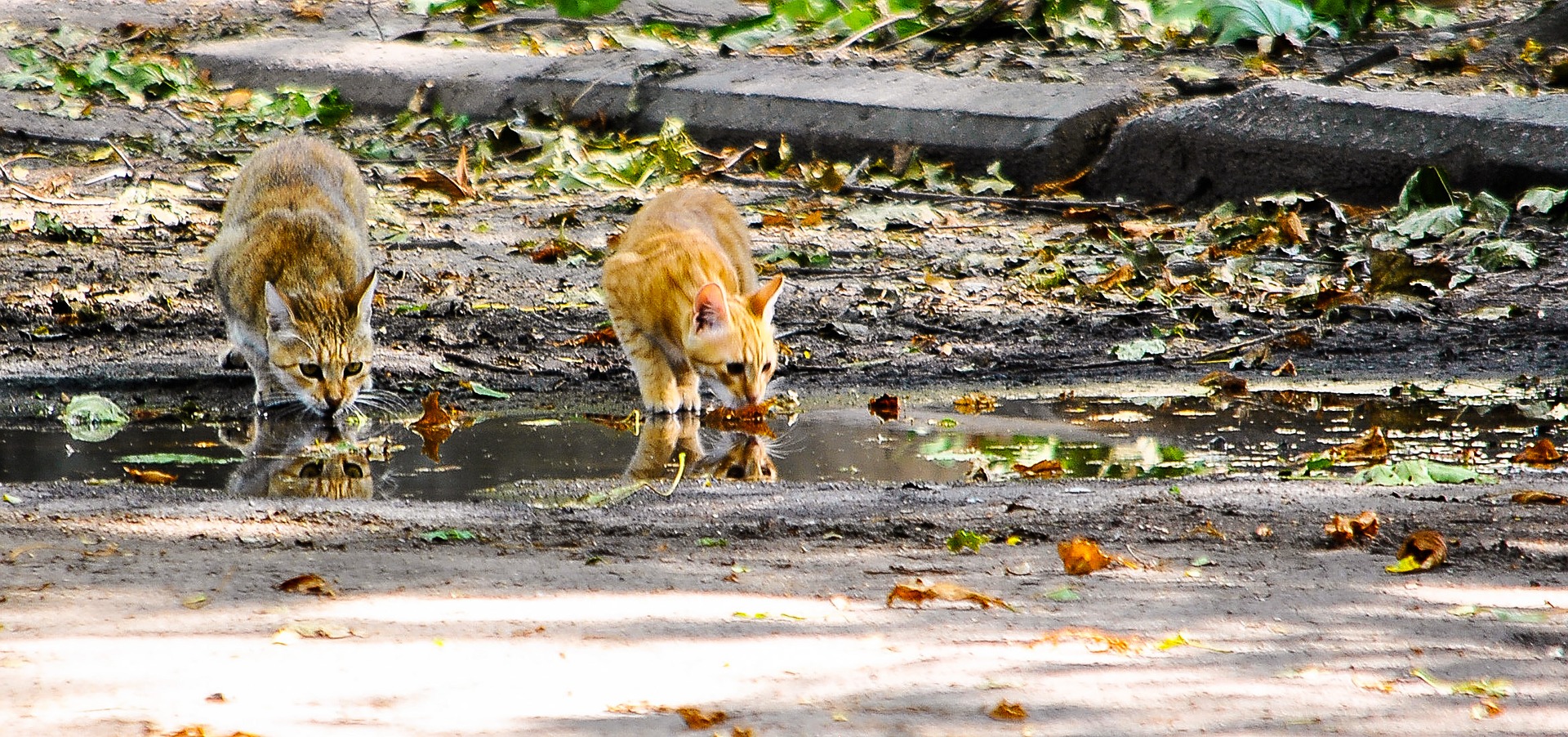Is it Safe for My Cat to Drink From Puddles and Streams?
Last Updated on
Your cat needs to stay hydrated on the trail.
But could “trail water” make them sick?
Cats are very sensitive and don’t like the chemicals and soap flavors that might appear in their water bowl. Still water in a dish can seem stagnant to your cat, making them more attracted to running water in a brook or a water fountain.
When out on the trail with your adventure cat, it’s possible that you’ll spot your thirsty kitty lapping up water from a puddle or perhaps a mountain stream.
Most of us know that these drinking holes and natural water fountains can be repositories of bacteria and disease for us, but are they also dangerous for our cats?
The short answer is sometimes. Sometimes streams, lakes, and puddles do contain bacteria that can make your cat sick. Other times, they don’t. But the chance that your cat will catch something from this water is too great to ignore.
Here are some of the waterborne diseases that your cat may pick up when drinking unpurified water in the outdoors:
Giardia
Even the most clear, sparkling forest brook can contain giardia lamblia, a protozoan parasite that causes chronic diarrhea in humans and animals. Besides being unpleasant for your cat and putting them at risk for severe dehydration, giardia is a zoonotic disease. That means that if your cat gets giardia from drinking parasite-contaminated water, you could end up contracting it as well.
This common disease comes out in the poop of an infected animal and can easily end up in your cat’s favorite drinking stream.
Leptospirosis
This is an infection of bacterial spirochetes, which are particularly prevalent in marshy areas with stagnant surface water. Your cat can ingest it while drinking contaminated water or licking their paws after walking in bacteria-filled mud.
The infection spreads throughout the entire body, including the organs, nervous system, eyes, and reproductive system. The infection causes sudden fever, muscle aches and stiffness, bloody vomit, irregular breathing, and numerous other serious symptoms. Especially among cats with weak immune systems, this infection can turn deadly when it affects the organs.
Cryptosporidium
This is a microscopic protozoan parasite that causes mild to severe gastrointestinal distress, including watery diarrhea, fever, abdominal cramps, nausea, and vomiting. Most cases are mild and not life-threatening and the disease typically doesn’t affect humans.
That said, this is a particularly tough parasite with a hard outer shell that makes it difficult to eliminate through chlorination.
Keep Your Cat Healthy and Hydrated
It’s important to make sure that your cat stays hydrated on the trail. Feeding your cat raw or moist food is the easiest and most powerful way to fight against dehydration.
As obligate carnivores in a desert environment, your cat’s ancestors got most of their hydration from their moisture-rich prey. Since they don’t instinctively drink water like many other animals do, cats can easily become dehydrated when fed a low-moisture diet. Although it’s convenient, kibble is a particularly poor choice for your cat while hiking.
Whether you’re taking a day trip or backpacking, providing healthy, water-packed food is key to your cat’s overall hydrati 
In addition to this, it’s a good idea to bring additional water. Offer your cat the same clean, filtered water that you might drink. You can serve this in a collapsible bowl designed for adventuring.
If your cat is hesitant to drink “on command”, try sprinkling water onto their fur. Your cat will instinctively lick themselves dry, getting a little extra hydration as they do so.








